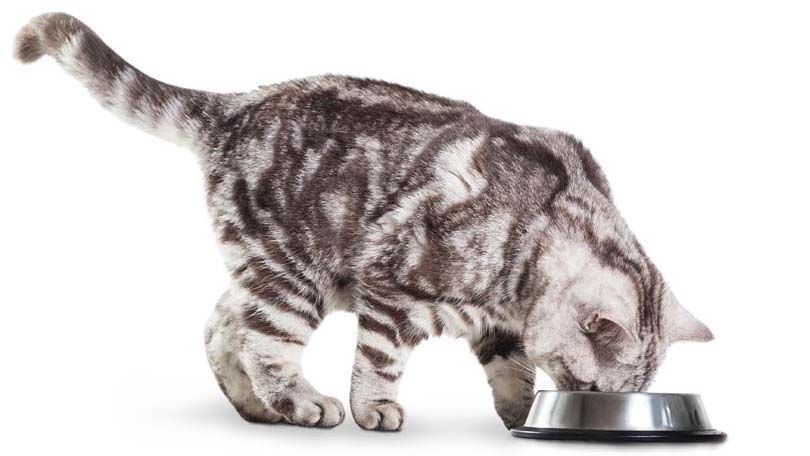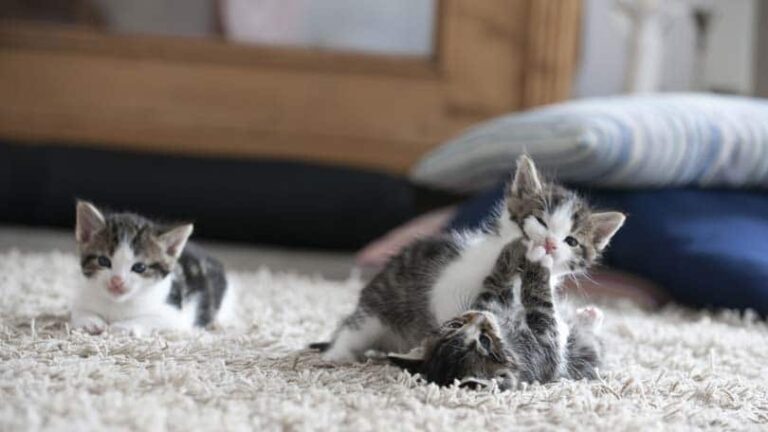How Often Should You Feed a Cat?
There is no cut-and-dry answer to the question of how often you should feed a cat, unfortunately. The age and physical condition of your cat as well as your own lifestyle will all be contributing factors. The following article will serve as a guide and provide all the information that needs to be taken into account when developing a feeding routine for your pet.
Kittens
Like with humans, the early age in cats is a time when they are most vulnerable and therefore require more nutrients than at other stages in their life. For correct growth and development, they need more food per pound of body weight than adult cats. Due to their petite size, it isn’t feasible for kittens to consume large portions of food, so smaller but more frequent meals are required. Of course, however, you don’t want to overfeed your kitten either, as this can be just as detrimental to their health as underfeeding can, so weighing your kitten regularly to ensure regular and normal growth is occurring is an important aspect of their early life. As a rough guide, consider four small meals spaced out between the day when the kitten is up to six weeks old. From six to twelve weeks, squash these meals into slightly larger portions given three times a day. At six months it is acceptable to offer just two meals a day.
Adult Cats
Officially a cat is not considered an adult cat until they are one year old, but as soon as they reach maturity, feeding your cat food that is nutritionally balanced for maintenance just once or twice a day will be sufficient to keep them fit and healthy.
The feeding routine you decide upon can remain unchanged as long as your cat is free from serious weight gain or illness. It would only be if either of these instances occurred that you should rethink either the food itself or the routine, if not both.
Elderly Cats
Generally speaking there is no need to change the feeding routine of a cat once it becomes old. If illness or disease sets in however, changes to the routine or type of food offered are likely to be affected. The onset of diabetes for example may mean that feeding times have to be altered to fit in around the insulin injection timetable, however in situations such as these, your veterinarian would advise you on the correct approach to take. It would depend entirely on the individual cat and type of illness.
One common problem amongst cats is the decay of their teeth. Gum disease quite often develops in this situation which can make chewing become harder for them, especially chewing on dry food. If your elderly cat is suffering from this problem, switch entirely to either a wet food or a much finer, softer dry food which will be much easier for them to eat. Another suggestion is to mash up the dry food with water which would also make it much easier to chew.
Dry Food
Dry food tends to be considered more of a convenience food, that is often given in addition to canned food rather than as a substitute. It is often thought to be nutritionally unbalanced, with too many carbohydrates, and not enough protein or other essential nutrients. In the wild, a cat would rarely eat carbohydrates as their food would come from hunting small creatures such as mice and birds.
There are more and more dry food products coming on to the market that are nutritionally balanced however and there are plenty of cats that lead long and healthy lives on just a diet consisting of this. The benefits of dry food are numerous and include convenience, a lower price and of course a long shelf life. Canned food spoils quickly and needs to be kept in a fridge once opened. A purely dry food diet needs to be accompanied by a large amount of water as there is little moisture found in these products, as opposed to canned food which is around 70 to 80% water.
Canned Food
Often cats prefer wet or canned food due to its better palatability. This can mean however that they don’t know when to stop eating, and won’t want to stop eating. It is very important to know how much food to give your cat for its nutritional needs, and not any more as weight gain leads to a host of health problems down the line.
With dry food, the problem of overeating is not as likely, perhaps due to the lesser palatability. Whilst it is highly likely that a cat would gain a large amount of weight if given free reign on canned food which would be less likely to happen with dry food. This is often why canned food is given once or twice a day by owners, with dry food left out during the day for grazing.
Schedule for Feeding a Cat
Your personal schedule is a big factor in how often your should feed your cat. Very busy mornings with getting kids to school and getting ready to work may mean that feeding the cat in the morning is unrealistic. It may be better to simply wait until the evening when there is more time available. If your evenings are hectic, then perhaps waking up five minutes earlier in the morning is more sensible. Work around your schedule, and do what’s best for you.
Keeping the feeding routine of your cat fairly consistent is important for both you and the cat. They know when and where their next meal is coming from, and you can get into a regular routine. Because there are no hard and fast rules, how often you should feed your cat is an individual decision, taking in the considerations above.

Having discovered a fondness for insects while pursuing her degree in Biology, Randi Jones was quite bugged to know that people usually dismissed these little creatures as “creepy-crawlies”.







